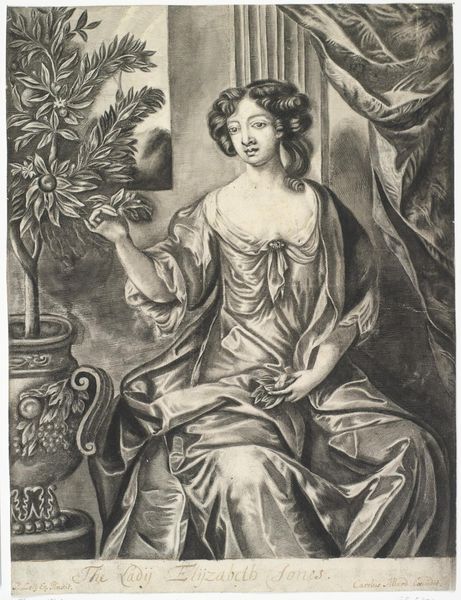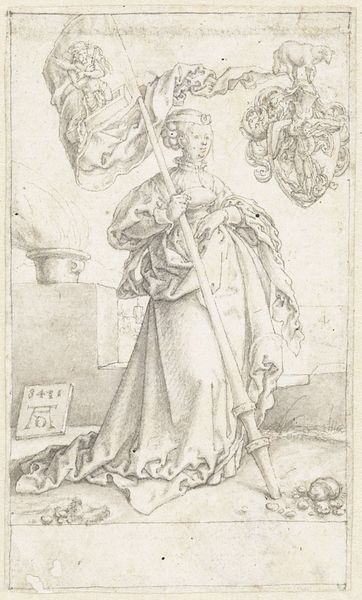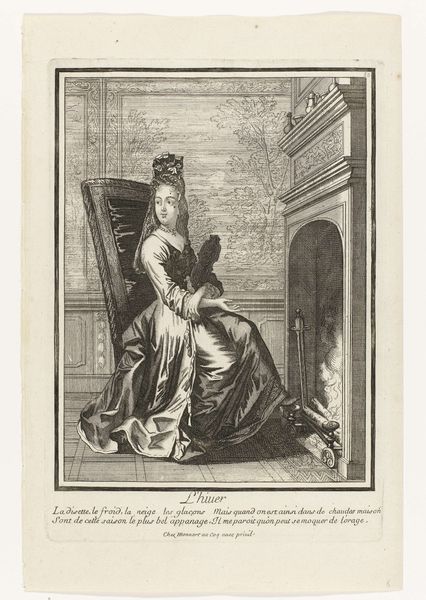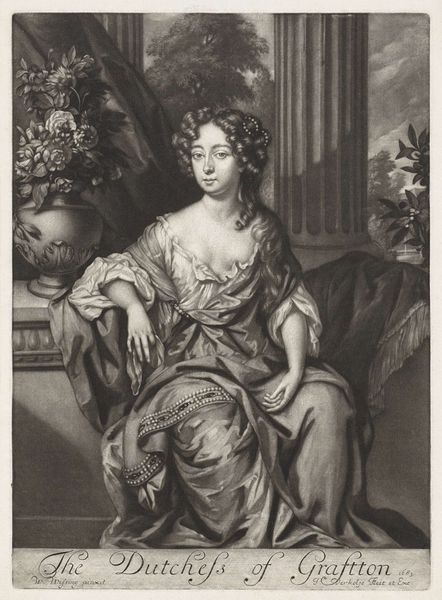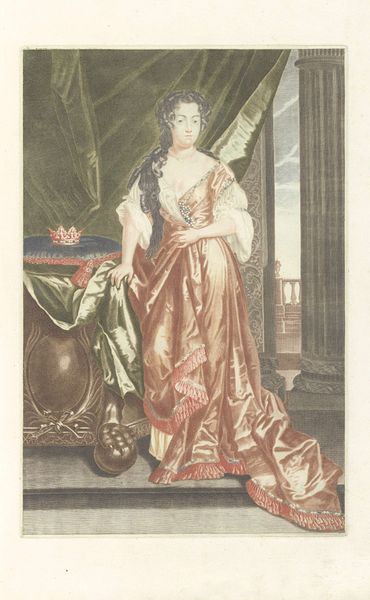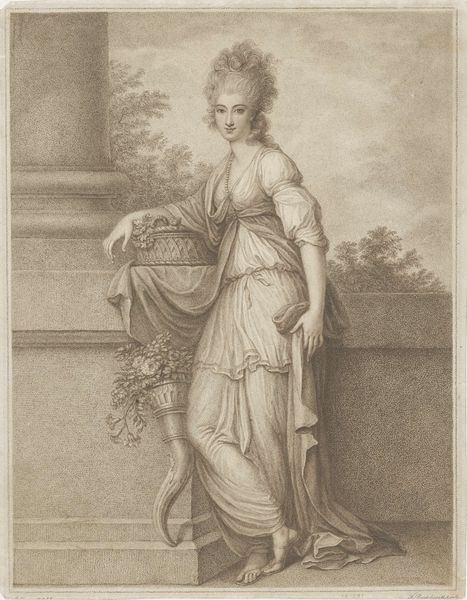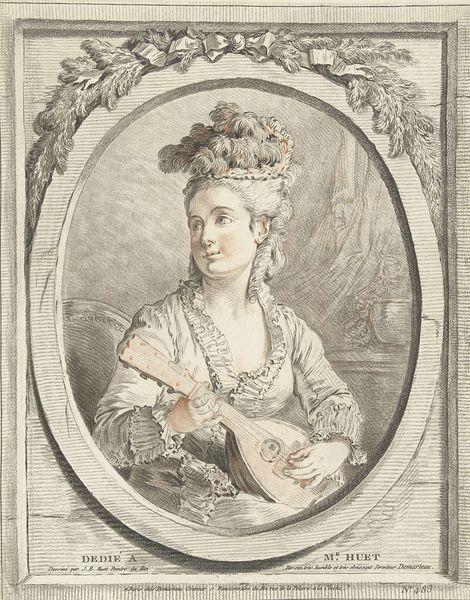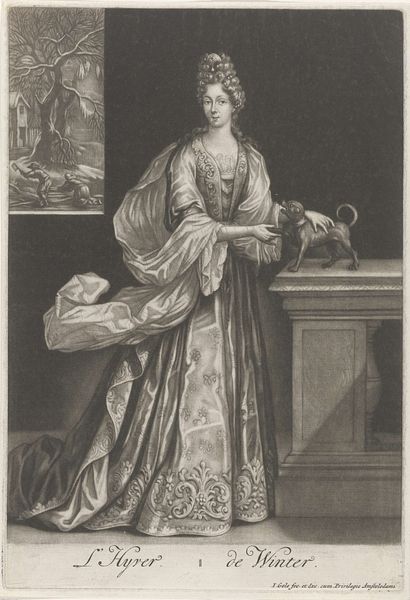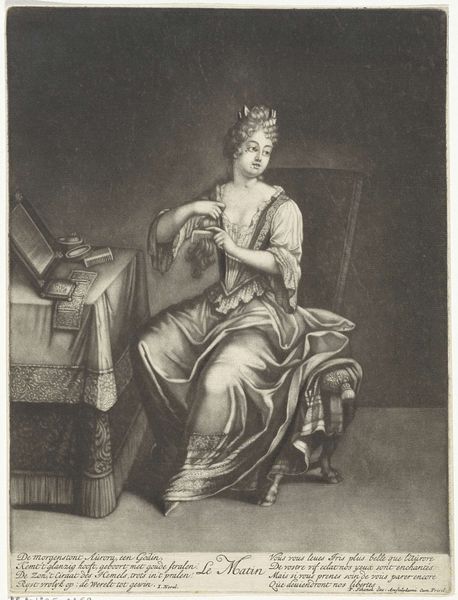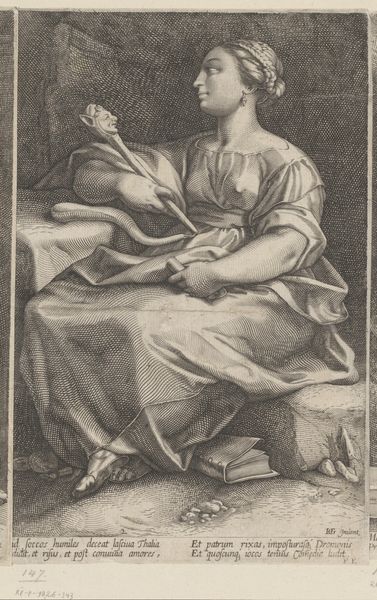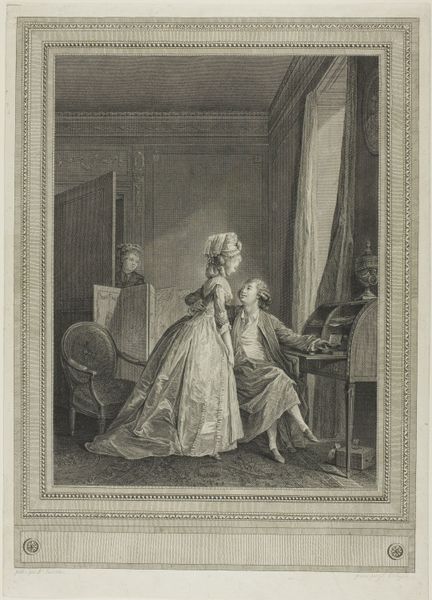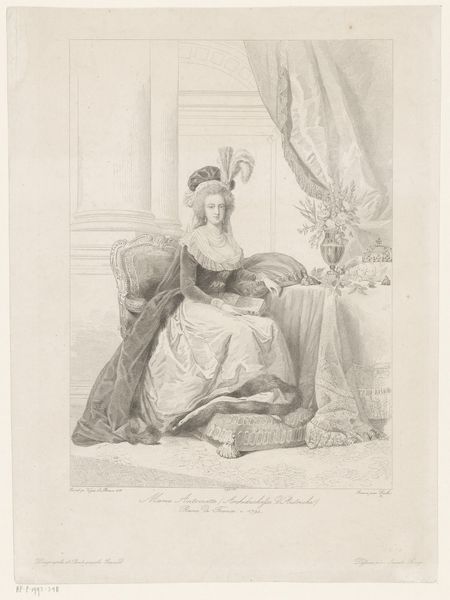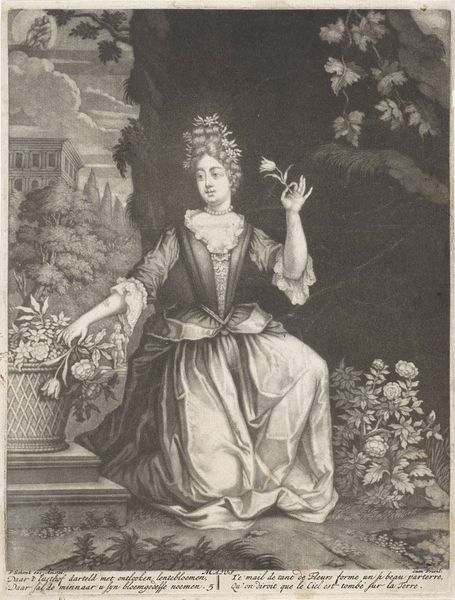
print, engraving
#
portrait
#
baroque
# print
#
coloured pencil
#
history-painting
#
engraving
Dimensions: height 260 mm, width 175 mm
Copyright: Rijks Museum: Open Domain
Curator: Welcome. Here we have "Portret van Calpurnia Pisonis", dating from 1675 to 1711. It’s attributed to Pieter Schenk and is a print housed here at the Rijksmuseum. Editor: My first impression? Serene, almost staged. There’s a careful arrangement of fabrics and a balanced, if somewhat cool, palette. Is it meant to convey power or vulnerability? Curator: Indeed, the composition relies heavily on contrasting textures – the rigid lines of the architectural elements offset by the fluid drapery. Semiotically, the classical backdrop alludes to the virtues of antiquity. What is conveyed in its overall structural syntax? Editor: I find it interesting how Calpurnia is presented. Consider that Pieter Schenk lived a good deal after her time. In art history, powerful women were seen as a model of governance or cautionary symbol regarding excessive power and dangerous desire. Her adornments and position seem less about historical accuracy and more about the statement of empire. Curator: The technique, engraving, is integral here. Notice how line is not merely representational but constitutes the very form. See the way hatching creates shading that gives weight and dimension to her figure and emphasizes her regal adornments. These structural details contribute to the power of the portrait. Editor: But consider what the Rijksmuseum and institutions like it communicate by displaying an image like this centuries after its creation. We lend it value, we allow it to be viewed. Calpurnia wasn’t Dutch; there is no colonial connection that validates display. Do you believe she simply serves as a decorative marker of empire, a general European aesthetic of power? Curator: Perhaps. Through a formalist lens, however, the image creates an atmosphere that stands separate from our own historical context. In the balanced orchestration of forms and in the subtleties of the engravings is expressed a beauty. Editor: Ultimately, even in these structured elements you describe, the impact stems from its representation of an elite figure amidst empire, a view afforded and perpetuated by institutions such as this. It gives us all something to think about. Curator: Indeed. Thank you for considering the print with us.
Comments
No comments
Be the first to comment and join the conversation on the ultimate creative platform.
